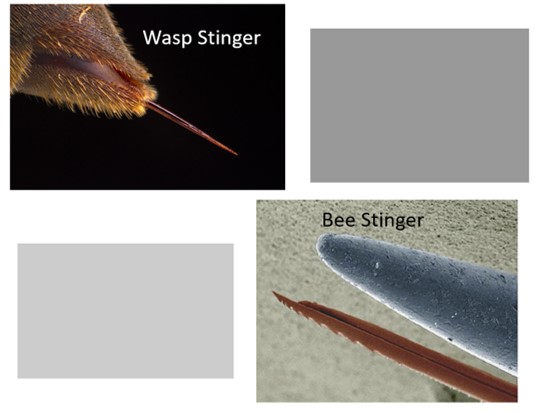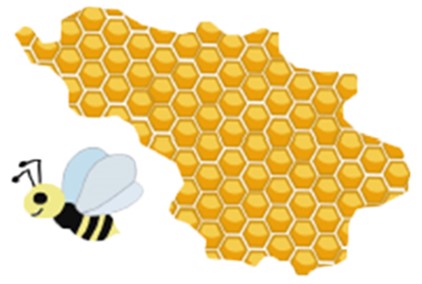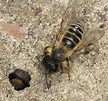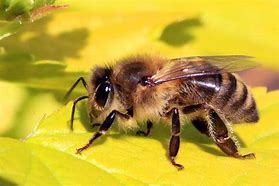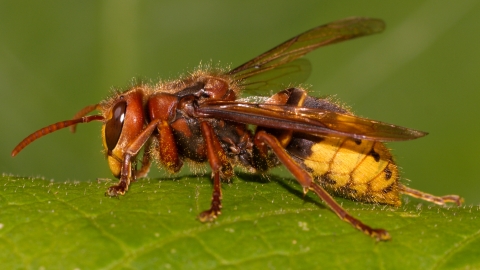Do you have a honey bee problem?
Are you sure you have a honey bee problem?
Are you concerned about stinging insects?
First, we need to determine if you have a honey bee problem.
- Are they bees, wasps, hornets?
- Are they honey bees or solitary bees
- Do you have a swarm? Outside? Inside?
How to tell honey bee problem from yellowjacket and hornet problem.
There are a few very easy ways to tell if it is a bee, a wasp, or a hornet. A bee has dark, usually black, legs. A yelllowjacket, and most wasps in Maryland, have yellow legs. Bees are usually covered with small hairs. The wasp has a shiny outer cover and no hairs.

Yellowjacket Nest
The above is a wasp nest. wasps, yellowjackets, will build nests on the outside as well as in the ground. Honeybees do not build nests in the ground.
For resources to deal with yellowjackets, visit Univerisity of Maryland.
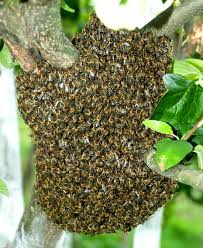
Honey Bee Swarm
For resources to deal with honey bees, visit:
If in or near Howard County Maryland:
My contact page. "About this website and Me"
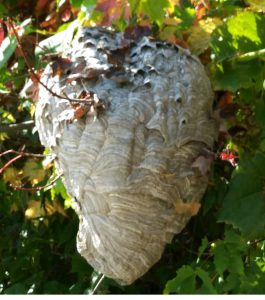
Hornet Nest
If you have a nest, similar to the above, that is located in a dangerous area, contact a professional to remove it. It can double in size within a few days.
For resources to deal with hornets, visit: University of Maryland
How to tell honey bees from digger, miner, and carpenter bees
Miner and digger bees live in the ground. Honey bees need an open cavity approximately a square foot in size, or larger.
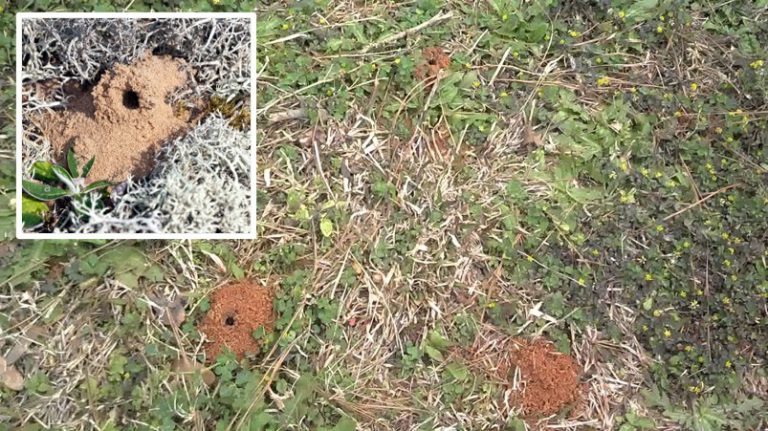
Miner or Digger Bee Nests
Miner bees are solitary bees. Each mining bee female usually digs her own burrow to rear her young. Large numbers of these bees may nest close together if soil conditions are suitable and will fly just above the ground.
Solitary bees only sting as a last resort you if you handle them roughly or pose a threat to them. Being loners, solitary bees fly around by themselves and do not attack in swarms or groups like some other types of bees.
Male bees of any bee species do not have stingers.
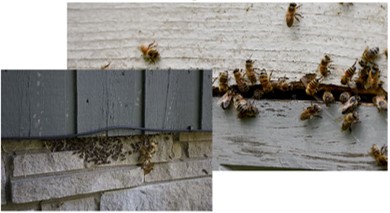
You Have a Honey Bee Problem!
Now what?
These honeybees have found a new home. Most likely, they are now living between the joist or studs of a building. If they have lived there for more than a few days, they have built comb and deposited honey, larvae, and eggs. If you kill the bees, the remaining food source will attract other insects and rodents. Depending upon the location, it is best to remove the bees and nest as quickly as possible.
My contact page. "About this website and Me"
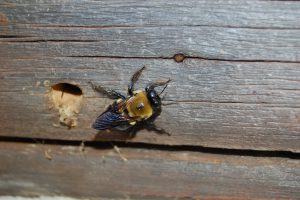
Carpenter Bee Nest
Carpenter bees live in separate holes they dig into the wood. Bumble bees typically nest within the ground while carpenter bees burrow into wood to lay their eggs. Specifically, soft, weathered and unpainted wood are perfect environments for carpenter bee nests.
Here is one method of control of Carpenter Bees.
Stinging Insects
Bees, wasps and hornets as well as 150,000 insects belong to the Order Hymenoptera. However, the wasps (yellowjackets are a wasp) and hornets are much more aggressive than honey bees. Most of the year bees (including honey bee bumble bee, and carpenter bee) sting defensively to protect their hive that contains food, and their young. Solitary bees including miner bees, mason bees, leafcutter bees, sweat bees, and a host of others), can sting but usually do not unless captured/threatened. Because the honey bee stinger has barbs, the stinger remains in the victim and the honey bee dies. When the wasp stings, the stinger is removed from the victim and the wasp can sting multiple times.
